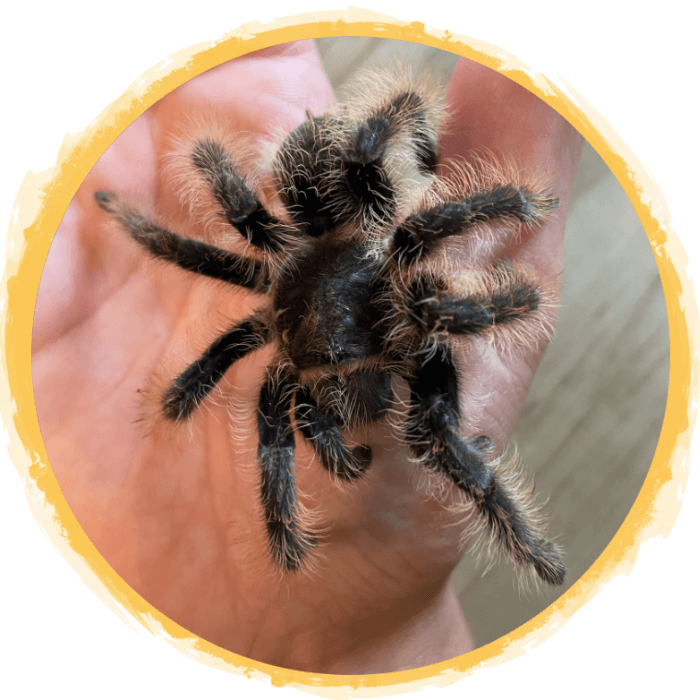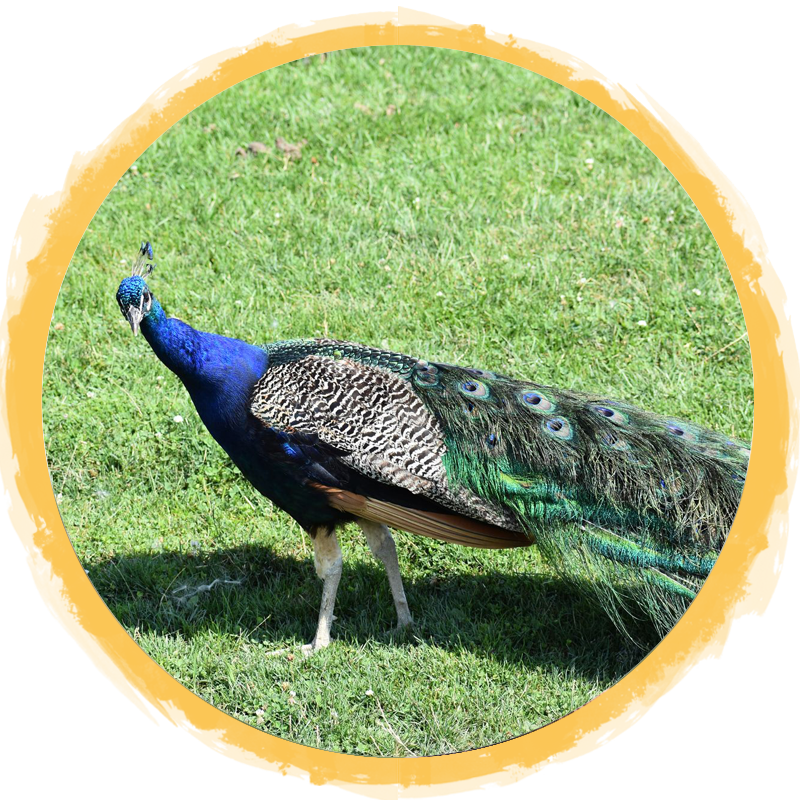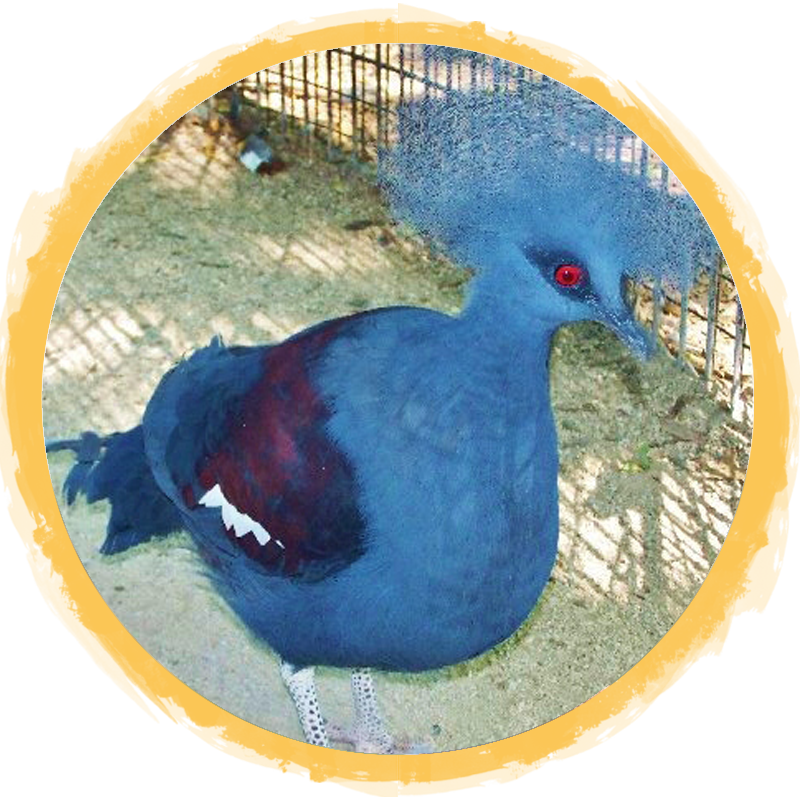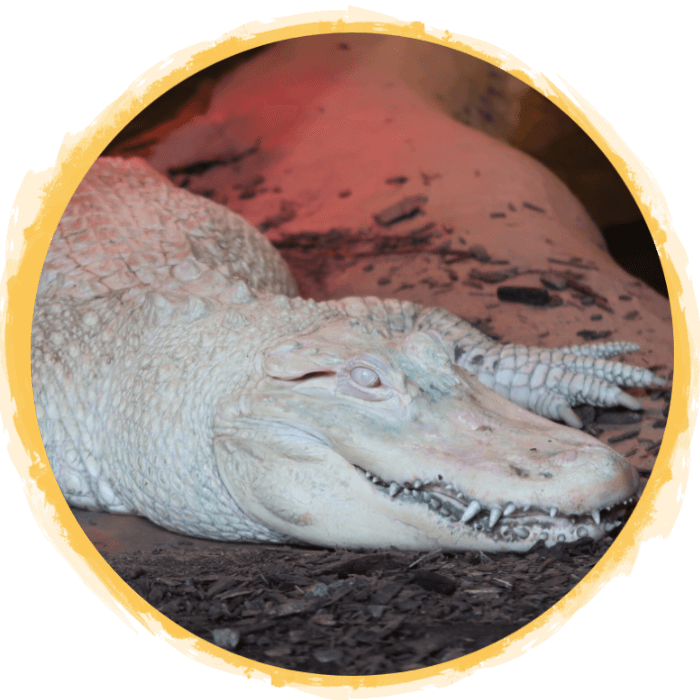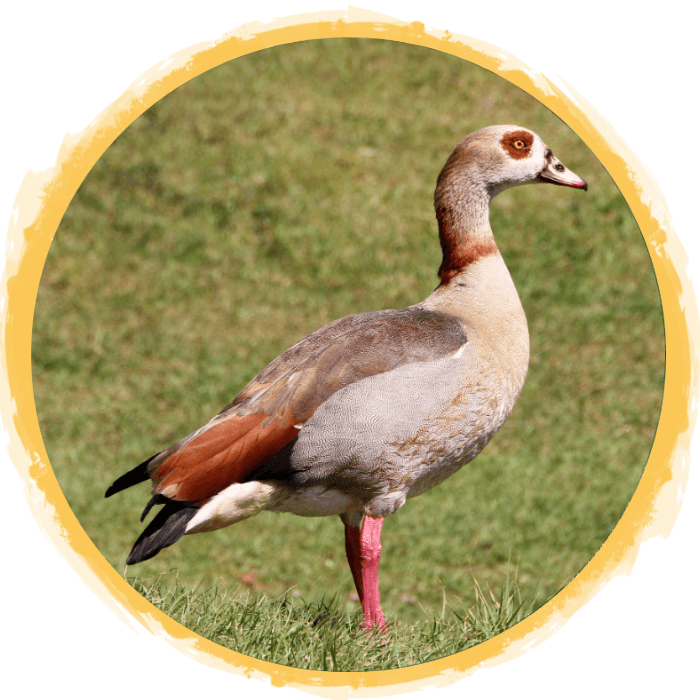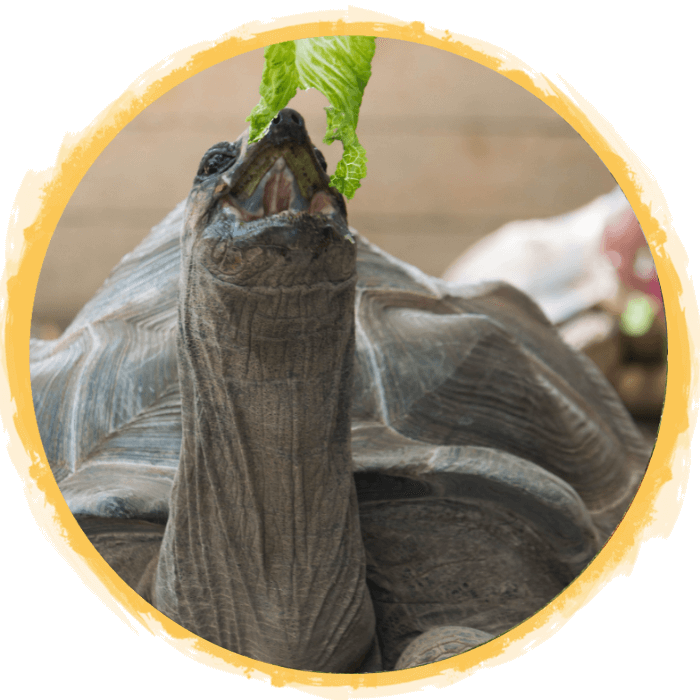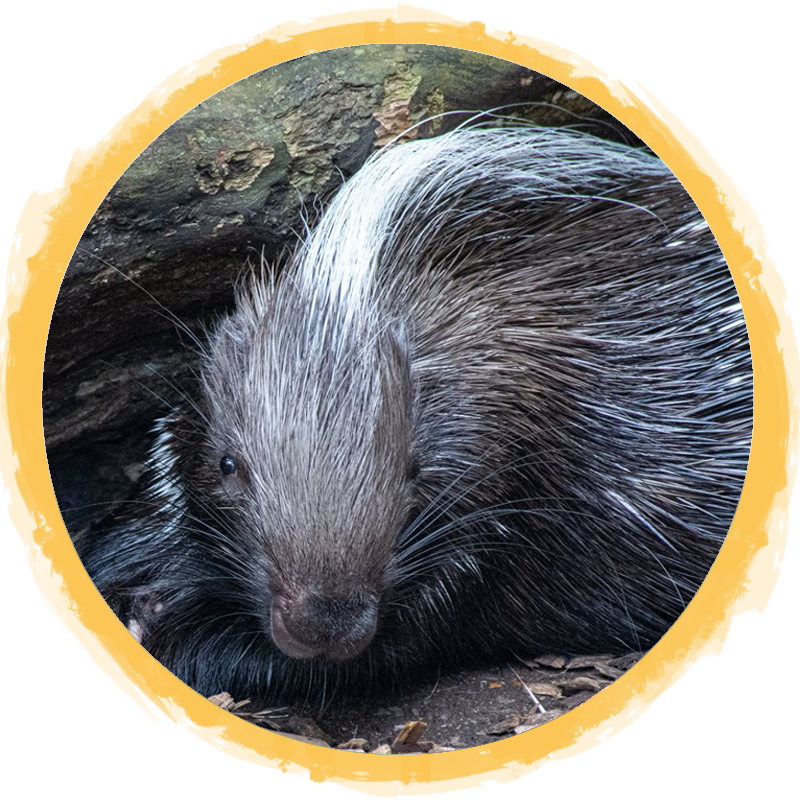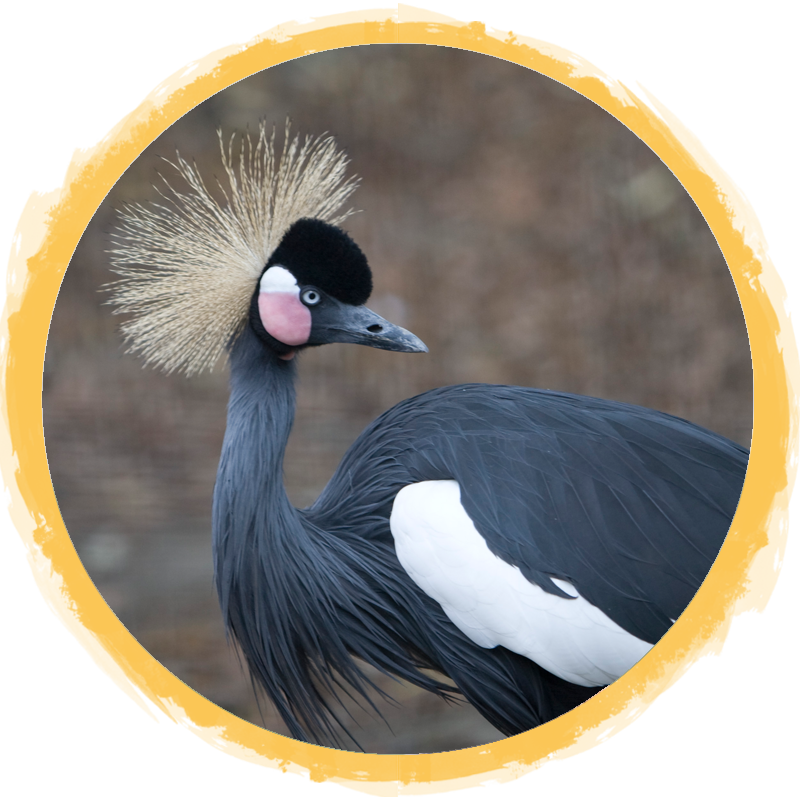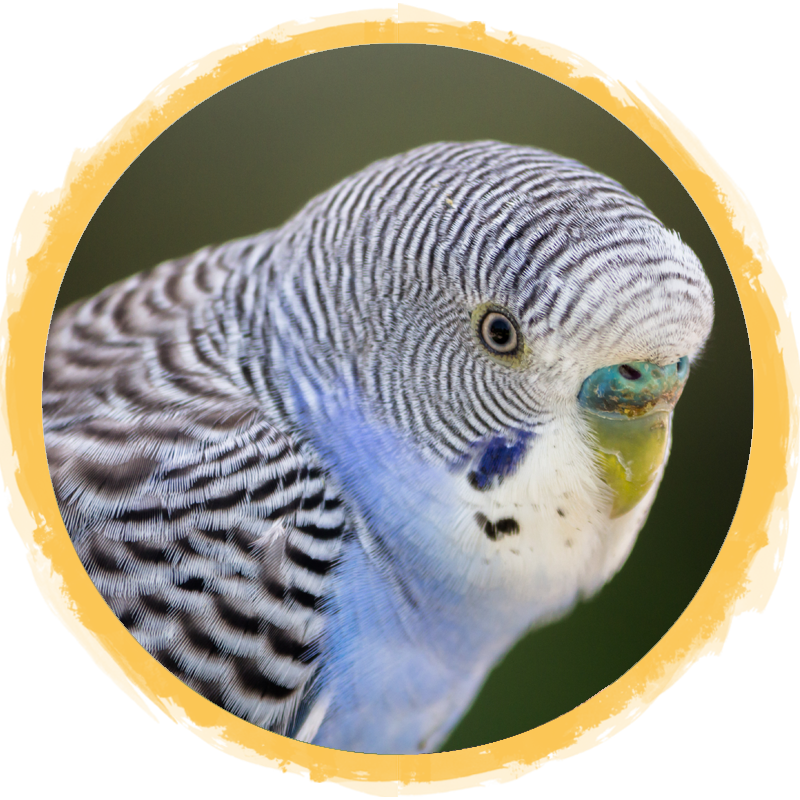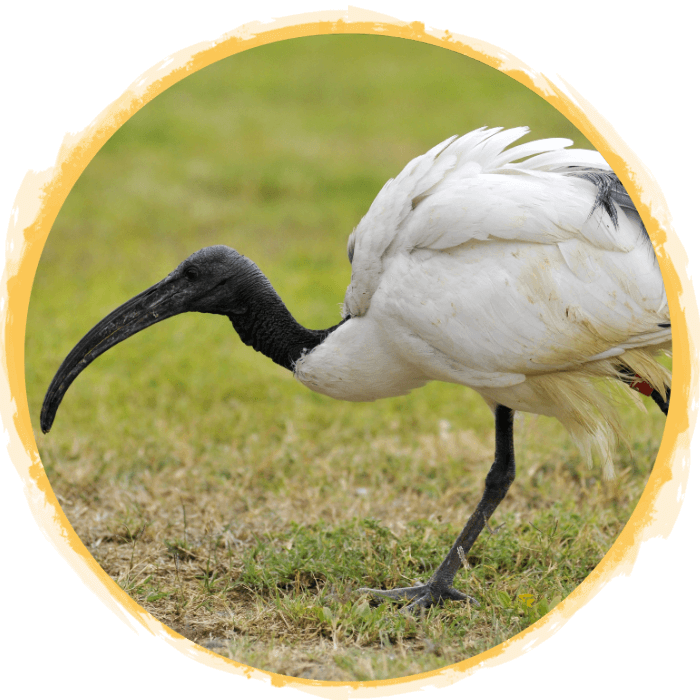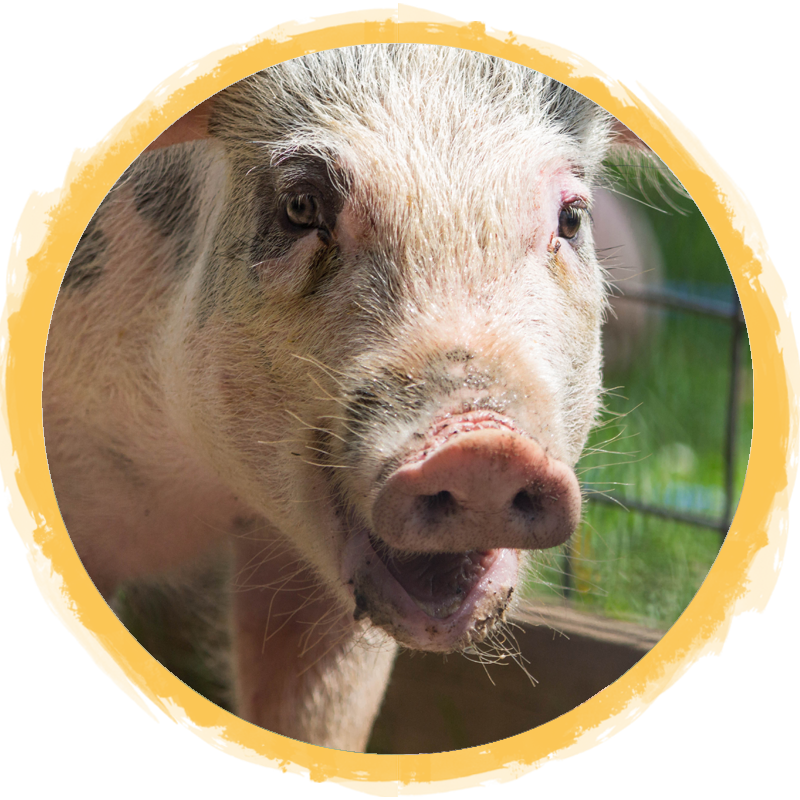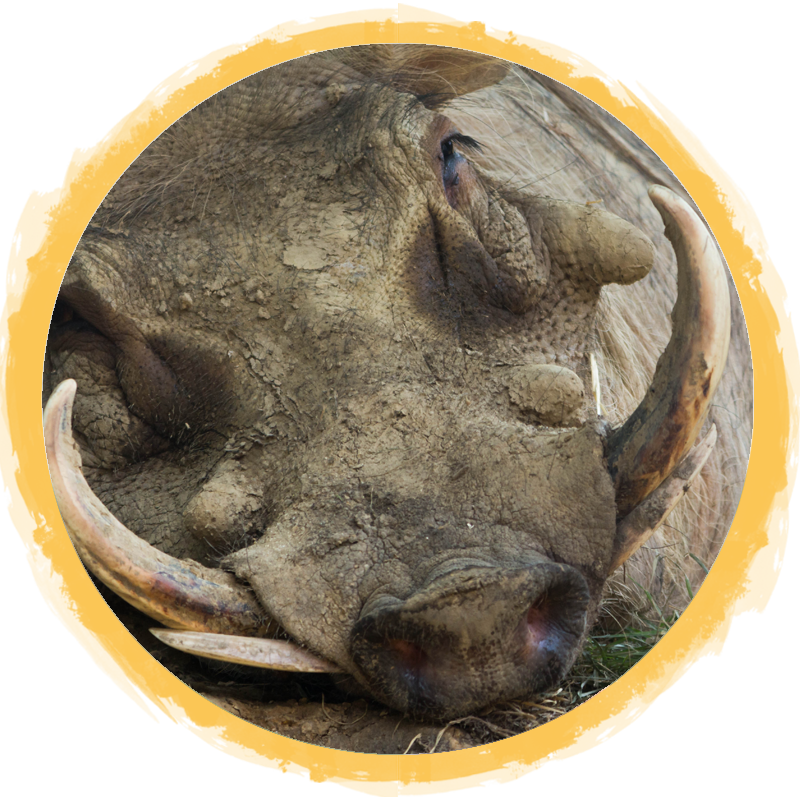(Balearica regulorum)
The East African Crowned Crane is native to the Congo, through Uganda to Kenya and Eastern South Africa. They prefer rivers and lakes with nearby grasslands and cultivated land. Crowned cranes are generally found in pairs but can occasionally be seen by themselves or in small flocks.
Their name comes from the bristle-like, golden feathers on top of their black head.
They are the only crane species capable of roosting in trees because of a large prehensile toe that allows them to grip. They have been observed following cattle to eat the insects that follow, and generally utilize disturbances caused by other species to forage for insects. Roosting in trees allows for an escape from predators but they can sometimes become prey to domestic dogs. They have adapted to staying by livestock to deter predators.
Another uncommon thing is that unlike other cranes, all of their chicks hatch at the same time. All cranes participate in courtship dances that consist of bobbing, bowing and jumps and both males or females can initiate it. When parents call to their chicks they make a sound like a purr which is also used to call to their mates. Both males and females help construct the nest and incubate the eggs.
The biggest threat to cranes is loss of habitat. This is often caused by drought related changes in land use. The lack of enforcement and monitoring have left the species in a declining trend. Stronger wetland protection is necessary and education of cranes is also vital to help local populations help these birds. A better understanding of wild populations, to further their management is also important.
Fast Facts
Country of Origin: Democratic Republic of the Congo and Uganda
Weight: 6.5 - 9 lbs
Size: 3.3 feet tall
Lifespan: 20 years in the wild
Diet: These cranes have a very general, omnivorous diet. They are known to eat insects, seeds, and small animals such as lizards.




